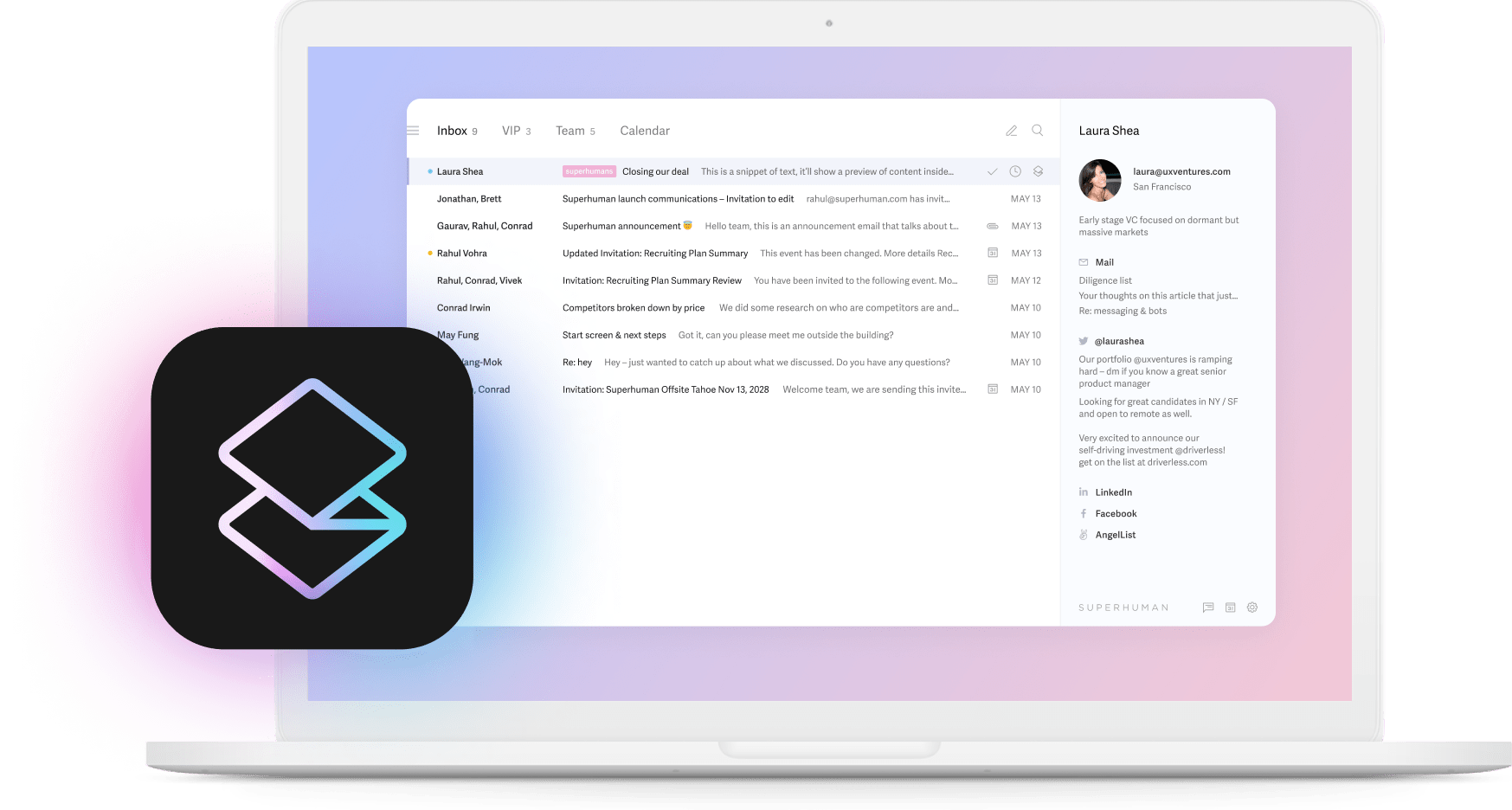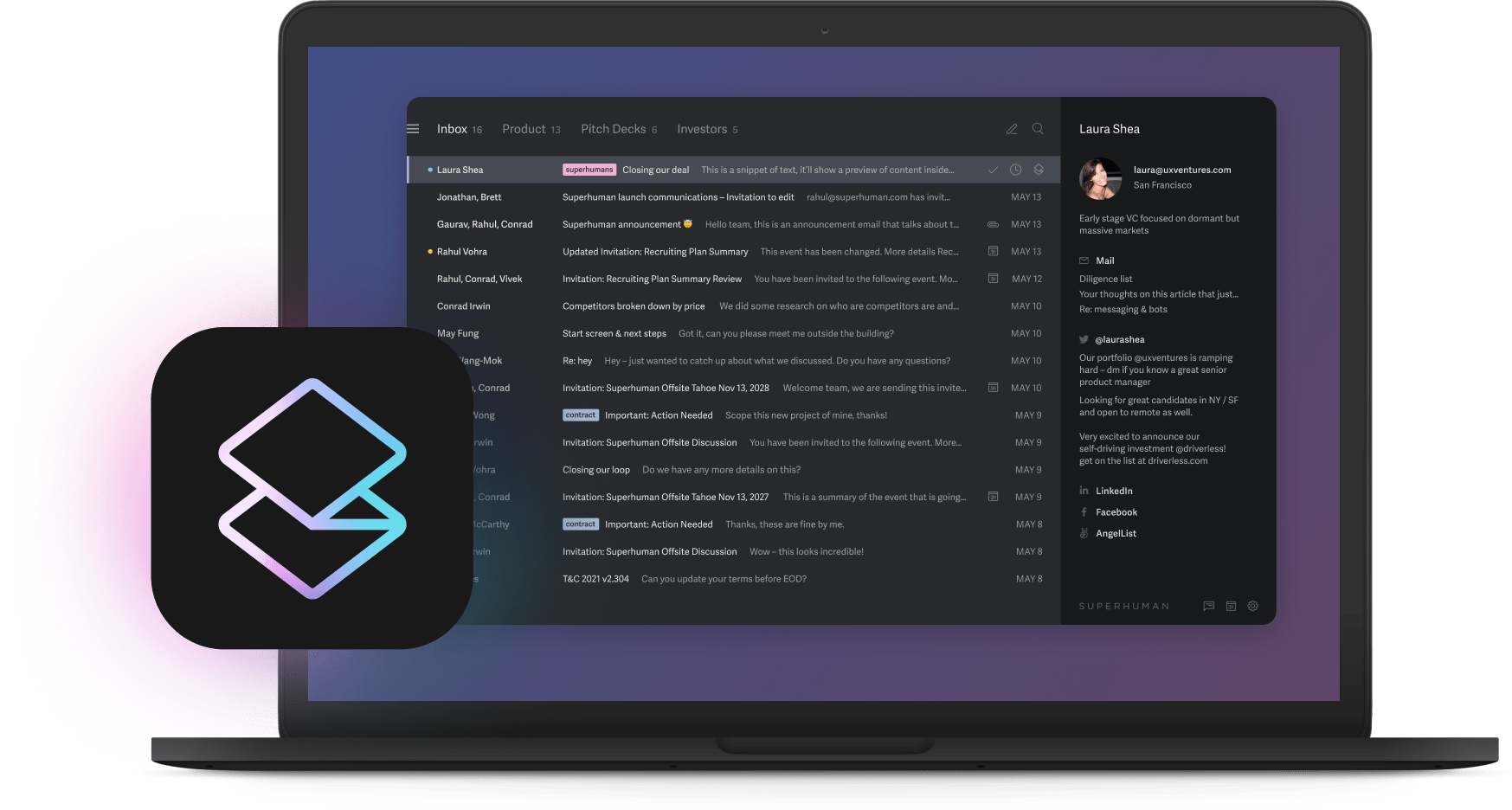
Most internal communications fail to drive the clarity and engagement teams need to execute effectively. You spend twenty minutes crafting an update email, send it out, then watch as three different people ask for clarification on what you thought was obvious.
These seven essential internal email examples handle the scenarios HR leaders, internal communications professionals, and team leads face every day. Leadership updates, crisis alerts, change announcements, recognition emails, policy communications, meeting recaps, and project kickoffs. We've stripped away the fluff and focused on what works.
Structured templates save you from starting with a blank page every time. Teams using consistent formats get faster responses and less confusion compared to winging it each time.
1. CEO/Leadership update email
Think about the last leadership email you got. Did it make you care about what's happening, or did you skim it and move on?
Good leadership emails do two things well. They give people concrete wins that make them feel proud, and they connect daily work to bigger company goals. You're not writing a press release here. You're talking to people who want to know how their efforts matter.
The trick is balancing inspiration with information. People need both the "why should I care" and the "here's what's working" in the same message.
Subject: Leadership update: Q2 wins and our path to [specific goal]
Email template:
Hi team,
I wanted to share some exciting progress we've made this quarter and outline our focus areas moving forward.
Key wins this quarter:
- [Specific achievement with metric, e.g., "Closed $2.3M in new business, exceeding our Q2 target by 15%"]
- [Team/operational achievement, e.g., "Launched our customer success program, achieving 95% satisfaction scores"]
- [Strategic milestone, e.g., "Completed Series B funding, positioning us for expanded market entry"]
Looking ahead, our priority is [specific strategic focus]. This means [brief explanation of what this looks like operationally for the team].
I'm particularly excited about [upcoming opportunity or initiative] and how this positions us for [specific outcome].
Questions about our direction or progress? Reply to this email or catch me in the office.
Thanks for making this quarter a success.
[Leadership signature]
Superhuman tip: Use Send Later to deliver these updates when your team's most likely to read them, like Tuesday or Wednesday mornings.
Want to know if your leadership email works? Ask yourself this. Would someone who's been at the company six months understand why they should care? If not, add more context about how the wins connect to their daily work.
2. Crisis communication email
Nobody wants to send crisis emails. But when something breaks, how you communicate determines whether people trust you or panic.
Here's what we've learned about crisis communication. Speed matters more than polish. People need facts, not reassurance. They want to know what to do right now, not how sorry you are that it happened.
The biggest mistake is burying the key information in paragraphs of context. Lead with what people need to know, then explain the details.
Subject: URGENT: [Brief incident description] - immediate action required
Email template:
Hi everyone,
We are currently experiencing [specific incident, e.g., "a system outage affecting our main customer portal"]. Here's what you need to know:
Current situation: [Clear, factual description of what happened and current status]
Immediate actions:
- [Specific step employees should take, e.g., "Direct customer inquiries to support@company.com"]
- [Alternative processes to follow, e.g., "Use backup system at [URL] for urgent requests"]
- [Communication protocols, e.g., "Do not share details on social media"]
Timeline: We expect resolution by [specific time] and will send updates every [frequency].
Questions or urgent issues: Contact [specific person/team] at [direct contact information].
We'll keep you updated as we work toward resolution.
[Leadership signature]
Superhuman tip: Real-Time Read Statuses show you who's seen urgent messages, so you can follow up with anyone who missed something critical.
Quick communication during emergencies builds trust. This template works for system outages, security incidents, facility issues, or anything requiring immediate response.
3. Company-wide change management email
Change emails are where good intentions go to die. You know what's coming. People will resist, ask why it's necessary, and generally make the transition harder than it needs to be.
But here's the thing about change communication. Most people aren't against change itself. They're against uncertainty and feeling left out of decisions that affect them.
The solution isn't more explanation. It's better explanation. Give context, spell out what's different, and show people how to succeed in the new reality.
Subject: [Change type] announcement - what you need to know
Email template:
Hi team,
Starting [specific date], we're implementing [specific change] to [brief reason that benefits the organization/team].
What's changing: [Clear explanation of new process, structure, or policy]
Why this matters: [Specific benefits this change brings to team effectiveness, customer experience, or company goals]
Timeline:
- [Date]: [Preparation phase, e.g., "Training materials available"]
- [Date]: [Implementation begins]
- [Date]: [Full transition complete]
Support available:
- [Training or resources, e.g., "Two training sessions scheduled for [dates]"]
- [Point person for questions, e.g., "Contact [name] for process questions"]
- [Documentation location, e.g., "Full guidelines available at [internal link]"]
We understand transitions require adjustment time. Your feedback and questions help us refine the process for everyone.
Send questions to [specific contact] or join the Q&A session on [date/time].
[Signature]
Superhuman tip: Split Inbox automatically sorts responses to change announcements, helping you tackle urgent concerns first and general questions later.
Good change communication acknowledges concerns while keeping focus on what's possible. Don't oversell the benefits, but don't undersell the support either.
4. Employee recognition email
Recognition emails either feel genuine or they don't. There's no middle ground.
The difference comes down to specifics. Generic praise sounds hollow because it could apply to anyone. Specific recognition shows you're paying attention to what someone contributed.
People remember recognition that connects their effort to real impact. They forget recognition that sounds like a form letter with their name plugged in.
Subject: Celebrating [Employee name] - [specific achievement]
Email template:
Hi everyone,
I want to recognize [Employee name] for [specific achievement or contribution].
[Employee name] [specific action taken, e.g., "led the client onboarding project that resulted in"] [measurable outcome, e.g., "reducing setup time from 2 weeks to 3 days and achieving 100% customer satisfaction scores"].
This shows [specific skills or values, e.g., "exceptional project management and customer focus"] and directly contributed to [broader impact, e.g., "our Q3 customer experience goals"].
[Employee name], thank you for [specific aspect of their approach, e.g., "your thorough planning and proactive communication throughout the project"].
Please join me in congratulating [Employee name] on this achievement.
[Signature]
Superhuman tip: Instant Reply makes it easy for team members to add quick congratulations, creating positive momentum around recognition.
Public recognition works because it shows everyone what good performance looks like. Use this template for project wins, client successes, or any achievement worth celebrating publicly.
5. New policy announcement email
Policy emails have a reputation problem. People see "new policy" in the subject line and immediately think "more rules, more bureaucracy."
But policies don't have to feel punitive. The best policy communications explain the thinking behind the change and focus on how it helps people do their jobs better.
Skip the legal language. Use plain English. If you can't explain why the policy matters in terms people care about, maybe the policy needs work too.
Subject: New policy: [Policy name] - action required by [date]
Email template:
Hi team,
Effective [date], we're implementing our updated [policy type, e.g., "remote work policy"] to [brief rationale, e.g., "provide clearer guidelines and ensure consistent flexibility across all teams"].
Key changes:
- [Most important change, e.g., "Remote work requires manager approval 48 hours in advance"]
- [Process change, e.g., "All requests submitted through [system/process]"]
- [Benefit or clarification, e.g., "Expanded eligibility to include project-based remote work"]
Action required: [Specific step employees must take, e.g., "Review the complete policy and acknowledge receipt"] by [specific deadline].
Full policy details: Complete guidelines available at [internal link/location].
Questions: Contact [HR contact/policy owner] for clarification on specific situations.
This policy takes effect [date]. Thank you for your attention to these updates.
[Signature]
Superhuman tip: Save policy templates as Snippets so you can maintain consistency across different policy updates without starting from scratch each time.
Clear policy communication prevents confusion and makes compliance easier for everyone.
6. Meeting recap email
Meetings without follow-up are just expensive conversations. The decisions don't stick, the action items get forgotten, and three weeks later you're having the same discussion again.
Good recap emails transform meetings into momentum. They capture what was decided, clarify who's doing what, and set expectations for what happens next.
The key is focusing on outcomes rather than rehashing everything that was discussed. People need to know what changed, not what was said.
Subject: [Meeting type] recap - action items due [date]
Email template:
Hi everyone,
Thanks for the productive [meeting type, e.g., "project planning session"] this morning. Here's our summary and next steps:
Key decisions:
- [Specific decision made, e.g., "Moving forward with vendor option B for Q1 implementation"]
- [Resource allocation, e.g., "Sarah will lead the integration team with support from IT"]
- [Timeline decision, e.g., "Launch date confirmed for March 15th"]
Action items:
- [Owner]: [Specific task] by [date]
- [Owner]: [Specific task] by [date]
- [Owner]: [Specific task] by [date]
Next meeting: [Date and time] to review progress on [specific agenda items].
Questions or updates: Reply to this email or reach out directly if priorities shift.
[Signature]
Superhuman tip: Auto Summarize helps you quickly turn long meeting notes into the key decisions and action items that belong in follow-up messages.
Good meeting follow-up ensures decisions translate into progress and keeps important commitments from slipping through the cracks.
Try Superhuman7. Project kickoff email
Project kickoff emails set the tone for everything that follows. Get it right and everyone knows what they're doing. Get it wrong and you'll spend weeks clarifying roles and expectations.
The goal isn't to include every detail about the project. It's to align everyone on what matters most. Clear objectives, defined roles, and immediate next steps.
Think of it as the foundation for successful collaboration. If people understand their part and how it fits into the bigger picture, most other project communication becomes easier.
Subject: [Project name] kickoff - team roles and next steps
Email template:
Hi team,
Welcome to [project name]. Here's everything you need to know as we begin:
Project overview: [Brief description of goals and expected outcomes, e.g., "Redesign customer onboarding to reduce time-to-value by 50% over 8 weeks"]
Team roles:
- [Name]: [Specific responsibility, e.g., "Lead designer - wireframes and user testing"]
- [Name]: [Specific responsibility, e.g., "Technical lead - integration and backend development"]
- [Name]: [Specific responsibility, e.g., "Project coordination and stakeholder communication"]
Key milestones:
- [Date]: [Deliverable, e.g., "Initial designs complete"]
- [Date]: [Deliverable, e.g., "Technical specifications finalized"]
- [Date]: [Deliverable, e.g., "Beta testing begins"]
Communication: Weekly check-ins every [day] at [time]. Project updates shared in [channel/location].
Immediate next steps:
- [Task for this week, e.g., "Review background materials by Friday"]
- [Preparation task, e.g., "Schedule individual kickoff calls with stakeholders"]
Please confirm your availability and any initial questions by [date].
Looking forward to working together on this.
[Signature]
Superhuman tip: Shared Conversations let your team collaborate directly within email, reducing the need to juggle multiple communication tools during project work.
Clear project communication from day one establishes the rhythm and clarity that leads to successful delivery.
Best practices for internal email success
Subject lines: Keep them under 50 characters and put the important information first. "Action required," "URGENT," or "Due [date]" help people prioritize what needs attention now.
Structure: Use the same pattern every time. Context up front, key information in the middle, clear action items, and a closing that invites appropriate follow-up.
Tone: Stay professional but don't sound like a robot. Match your company culture while avoiding jargon that excludes people who aren't familiar with specific terms.
Mobile formatting: Most people check email on their phones. Short paragraphs and bullet points make your messages easier to scan and understand.
Good internal communication includes smart follow-up timing and consistent feedback that helps you improve your templates over time.






